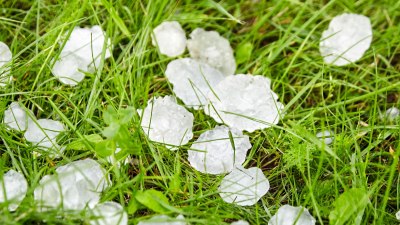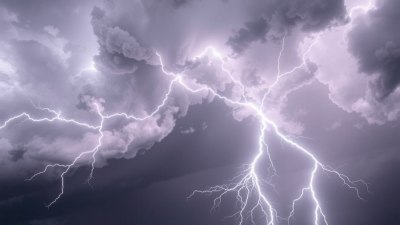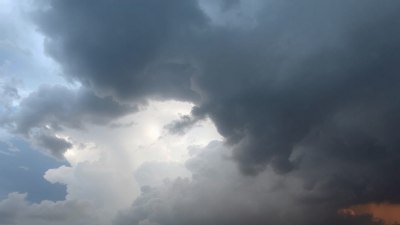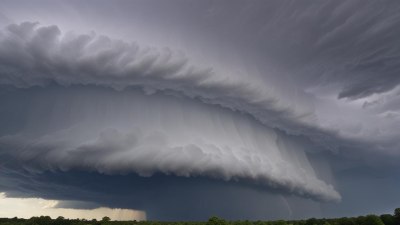What Causes Some Hailstones to Have Rings
Discover the fascinating science behind hailstone formation and why some have distinct rings.

Hailstones are a remarkable meteorological phenomenon, known for their icy structure and the potential to cause damage to property and crops. Among the various types of hail, some hailstones exhibit a unique characteristic: they are layered, resembling small spheres of ice with distinct rings. Understanding the formation of these ringed hailstones involves a deep dive into the processes that lead to the creation of hail itself.
Hail forms within strong thunderstorms when updrafts carry moisture into extremely cold regions of the atmosphere. As the supercooled water droplets ascend and freeze, they accumulate layers of ice, leading to the creation of hailstones. When the environmental conditions are just right, these hailstones model a layered structure, created through a combination of factors.
The Role of Updrafts in Hail Formation
Updrafts are a crucial component in the formation of hailstones. During a thunderstorm, updrafts can range from moderate to extremely strong, lifting water droplets into colder layers of the atmosphere where temperatures can be significantly below freezing. As the droplets ascend, they encounter lower temperatures, causing them to freeze almost instantaneously. This initial freeze leads to the formation of the core of the hailstone.
Once a hailstone has formed a core, it can remain suspended in the storm's updrafts for varying lengths of time. This duration is critical for the development of multi-layered hailstones. As the hailstone oscillates up and down within the cloud, it can encounter additional supercooled water droplets, which then freeze upon contact with the existing ice, adding layers to the hailstone.
Conditions for Layer Formation
The presence of supercooled water is essential for layered hailstones. Supercooled water exists in the atmosphere as liquid at temperatures below freezing. When this supercooled water collides with an existing hailstone, it can freeze immediately, leading to the creation of an additional layer. The size of the supercooled droplets and the strength of the updraft dictate how many layers are formed.
Furthermore, if the updraft weakens at any point during the hailstone's journey through the storm, the hailstone will begin to fall, allowing it to grow in size through multiple collisions with water droplets before it finally descends to the ground. Each time it cycles through the updraft and encounters more supercooled water, a new layer can be added, essentially creating a beautifully layered structure.
Effects of Temperature and Pressure
Temperature and pressure also play pivotal roles in the characteristics of hailstone formation. Higher altitudes are typically colder, and thunderstorms that reach considerable heights can produce larger hailstones. Low pressure conditions associated with strong thunderstorms can lead to more vigorous updrafts, enhancing the potential for hail formation.
The interactions between temperature, humidity, and atmospheric pressure can also affect the size of the supercooled water droplets available for accumulation on the hailstone. Variations in these atmospheric conditions lead to differences in the size and shape of the hailstones formed.
The Ice Accretions: A Closer Look
The formation of rings occurs due to the dynamic freeze-thaw cycle that takes place as the hailstone travels through the storm. Each time a layer of ice is added, it may take on a slightly different structure based on the specific atmospheric conditions at that moment. This variability can lead to the rings being of different thicknesses, creating a visual effect that resembles an onion-like appearance.
In essence, the rings of ice formed around the hailstone can be thought of as records of its trajectory and the specific conditions it has encountered. Each layer gives insight into the environmental changes within the storm's cloud structure, as well as the variations in the supercooled water present during those moments.
Implications of Ringed Hailstones
Ringed hailstones not only fascinate scientists but also pose practical implications for meteorologists and researchers. Knowing about the formation and characteristics of hail can assist in forecasting severe weather conditions. Understanding hailstone structure can help predict the potential for damage to crops, vehicles, and buildings in areas prone to thunderstorms.
Furthermore, studying ringed hail can enhance our knowledge of precipitation processes and cloud dynamics. Insights from the structure of hailstones provide valuable information on how storms develop and evolve, allowing for improved weather prediction models.
Scientific Studies on Hailstone Formation
The study of hailstones has led to significant advancements in meteorology. Researchers often collect hail samples during significant storm events to analyze their characteristics. Through these analyses, scientists can determine the depth of the ice layers, the size of the hailstones, and the conditions under which they formed.
One important aspect of such studies is understanding the role of atmospheric conditions in hail formation. By correlating the properties of the hailstones with the meteorological data collected during storms, scientists can identify patterns and establish links between certain atmospheric dynamics and the characteristics of hail.
The Broader Impacts of Hail and Storm Patterns
Hail does not only affect individual regions; it can have broader impacts on agricultural and ecological systems. The occurrence of hail can influence farming decisions and affect crop yields. Understanding the nuances of hail formation, particularly with ringed structures, can provide farmers and agricultural planners with better tools for risk management.
Similarly, the ecological balance in certain regions may also be impacted by hail storms. Certain plants and crops may be more resilient to hail damage while others could be severely affected. Thus, hail and its patterns can influence biodiversity and the health of ecosystems, making it an important area of study.
The unique phenomenon of ringed hailstones serves as a testament to the dynamic nature of our atmosphere. The complexity of meteorological factors involved in their formation—from updraft strength to supercooled water availability—highlights the intricate interactions that occur within storms. Understanding these processes not only satisfies our curiosity about weather phenomena but also equips us with tools to better prepare for the challenges posed by severe weather.
Future research will undoubtedly continue to unveil the mysteries of hail formation, providing insights that could further enhance our weather prediction capabilities and contribute to better agricultural practices. The next time you encounter hail, take a moment to appreciate the spectacular layers of ice that tell a story of the storm’s intensity and the dance of temperature and pressure in the sky.











